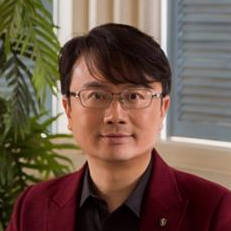Physical Metallurgy of Metals and Alloys II
A special issue of Materials (ISSN 1996-1944). This special issue belongs to the section "Metals and Alloys".
Deadline for manuscript submissions: 20 May 2024 | Viewed by 13737
Special Issue Editors
Interests: bulk metallic glasses; high-entropy alloys; titanium alloys; metallic composites; precision metal plastic forming; powder metallurgy; incremental sheet forming
Special Issues, Collections and Topics in MDPI journals
Interests: superalloys; metal cutting; composites; additive manufacturing; laser processing/cutting
Special Issues, Collections and Topics in MDPI journals
Interests: microforming; ultrasonic forming; ultrasonic machining; additive manufacturing
Special Issues, Collections and Topics in MDPI journals
Interests: solidification behavior of light alloys; bulk metallic glass composites; strengthening and toughening of metals and their fatigue behavior; functional metal materials for water treatment
Special Issues, Collections and Topics in MDPI journals
Special Issue Information
Dear Colleagues,
Physical metallurgy is important in the design and optimization via microstructural modifications and processing techniques of advanced materials with superior physical and mechanical properties over their service lives. The goal of this Special Issue on the physical metallurgy of metals and alloys is to bring together information on the recent progress, novel technologies, and advanced equipment described in our works on the design and development of advanced metals and alloys and to provide guidelines/benchmarks for further research in related areas. Composites, intermetallics, and nano materials as well as functional materials will also be included.
Examples of some of the recent advances relating to the design, properties, and processing of advanced metals and alloys include novel material processing techniques, manufacturing methods/theories, microstructural characterization, modeling development, and advanced equipment. Conventional and nonconventional processes relating to machining, forming, laser processing, additive/subtractive manufacturing, surface modification, and the solidification of high-performance alloys/metals are also included.
Topics of papers that will be considered for publication in this Special Issue of Materials can include all the above classes of materials and the areas of physical metallurgy, process metallurgy, materials science, and processing techniques. Specific areas of interest also include titanium-/nickel-based superalloys, intermetallics, advanced metallic materials, nano materials, metal matrix composites, functional materials, related synthesis and processing techniques, finite element modeling, statistical analysis, physical/mechanical property characterization, experimental validation, and other relevant phenomena. Full papers, short communications, and reviews are all welcome.
Dr. Pan Gong
Dr. Maojun Li
Dr. Guangchao Han
Dr. Xin Wang
Guest Editors
Manuscript Submission Information
Manuscripts should be submitted online at www.mdpi.com by registering and logging in to this website. Once you are registered, click here to go to the submission form. Manuscripts can be submitted until the deadline. All submissions that pass pre-check are peer-reviewed. Accepted papers will be published continuously in the journal (as soon as accepted) and will be listed together on the special issue website. Research articles, review articles as well as short communications are invited. For planned papers, a title and short abstract (about 100 words) can be sent to the Editorial Office for announcement on this website.
Submitted manuscripts should not have been published previously, nor be under consideration for publication elsewhere (except conference proceedings papers). All manuscripts are thoroughly refereed through a single-blind peer-review process. A guide for authors and other relevant information for submission of manuscripts is available on the Instructions for Authors page. Materials is an international peer-reviewed open access semimonthly journal published by MDPI.
Please visit the Instructions for Authors page before submitting a manuscript. The Article Processing Charge (APC) for publication in this open access journal is 2600 CHF (Swiss Francs). Submitted papers should be well formatted and use good English. Authors may use MDPI's English editing service prior to publication or during author revisions.
Keywords
- advanced metallic alloys
- combinatorial alloy design
- additive manufacturing and powder metallurgy
- energy field-assisted machining and plastic-forming technologies
- solidification and casting
- high-energy beam welding
- heat treatment and surface treatment
- microstructure-property characterization
- simulation and modeling
- strengthening and toughening technologies
Related Special Issue
- Physical Metallurgy of Metals and Alloys in Materials (24 articles)









